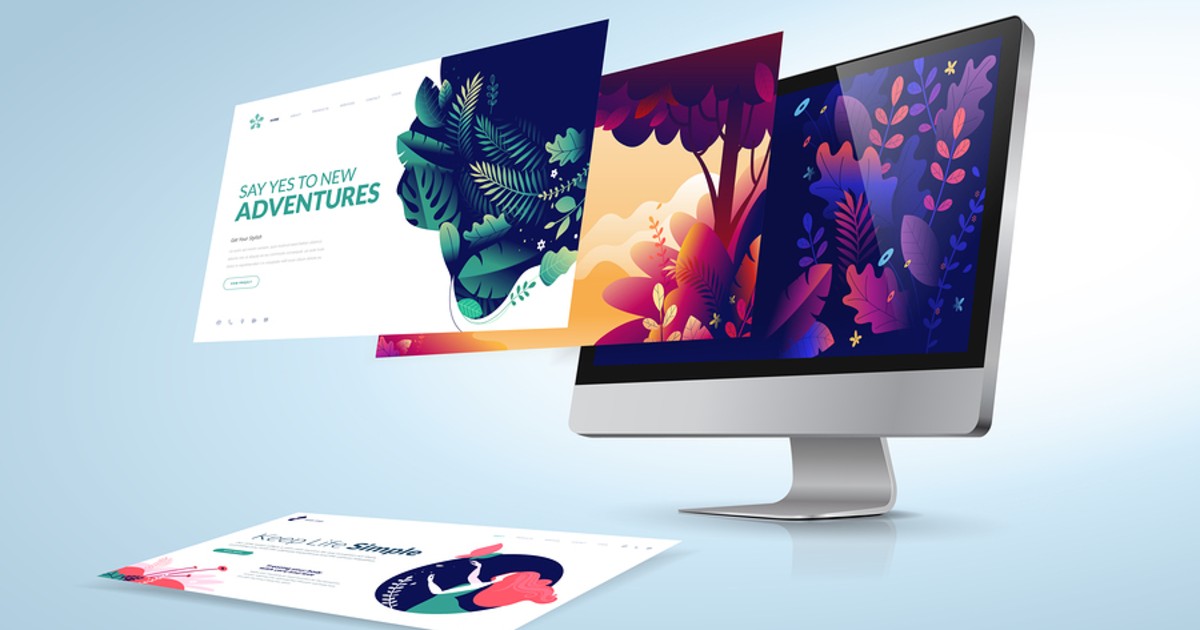
To the outside eye, making changes within a business might look simple. To the insider, a decision such as a move from traditional to headless ecommerce can be both frightening and thrilling at the same time. The flexibility that you gain from implementing a headless ecommerce system is enormous, but how do you get there? Here's how to get started with a headless ecommerce model.
Consider Your Options
There are a number of different options out there when you're developing an online store. These include:
- Traditional, packaged ecommerce. Develop a store based on the infrastructure of a single, dedicated ecommerce platform. This has the advantage of being a one-stop ecommerce shop, but it can't be customized to your needs as easily, especially if you need very frequent updates and many different channels.
- A completely customized website that you build from the ground up and maintain on an ongoing basis. Unfortunately, this is a challenge for small and even medium-sized businesses to manage.
- The sweet spot in the middle - headless ecommerce. According to Torque, this involves "using one platform to handle what’s called the ‘presentation layer,’ and another for the e-commerce functionality." While headless ecommerce does involve some ongoing work to keep it updated and running, in general, it is a good compromise, giving you more flexibility than traditional ecommerce and less of an investment of time than you would need to make if you created the entire infrastructure from scratch.
Headless ecommerce does require development and design skills on an ongoing basis. The first step of implementing this type of platform is to ensure that this truly works for your business. Before your transition, make sure that you have the financial and human resources required to make it successful.
Choose Your Target Channels
One of the biggest advantages of headless ecommerce is its ability to allow your business to embrace omnichannel marketing. According to GrowCode, "Amazon, which sells through a variety of channels, including on its browser site, app, virtual assistants (like Dash and Echo), smartwatches, and more, is the most compelling example of how effectively this strategy can work."
As you investigate your online store possibilities, look closely at why you are investigating headless ecommerce. Specifically, what target channels do you want to pursue?
- Would you like to try to reach people through social media? If so, what platforms do your current and desired audiences use?
- Are there apps that are particularly convenient or attractive to your audience?
- What kind of functionality do you want to have on your website?
- Does your audience enjoy email marketing or blogs?
The beauty of headless ecommerce is that it can accommodate these different target channels. This is also the challenge; since the possibilities are so open, you need to decide what to do based on your needs and the needs and interests of your current and future audiences. However, even if you don't include exactly what you want the first time, headless ecommerce is flexible enough to allow you to change with the times, though you'll need to put some extra work in each time you make an adjustment.

Choose Your Platform
Headless ecommerce has a number of advantages, and you might pursue it for one or all of these reasons:
- You need to have more advanced functions than your pre-packaged platform provides.
- The scope of your operation has exceeded what you can provide through a traditional platform.
- You want to maintain different layers of your store - for instance, you may already have a presentation layer to your store, and you want to add new elements such as an online store.
What platforms are available to you to cover these bases? There are a huge number of options, and more come out every day.
- If you're only looking for frontend store design, you could use Vue Storefront or Front Commerce or Shopifyplus.
- If you'd like to reorganize your cart and checkout systems, you can use Commerce.js, Stripe, Snipcart, Foxy.io.
- Only the cart and checkout? Use something like Snipcart, Foxy.io, Commerce.js, or Stripe checkout.
- Would you like to coordinate operations such as discounts and abandoned carts? Foxy.io and Snipcart can help with that.
As you consider your options, think about:
- How much do you want to do in house, and how much can you outsource to another platform?
- Is SEO important, and how does this rank when compared to other needs?
- What kind of store management and content management needs do you have? This might include roles, blog post creation, SEO, product management, and much more.
- What kind of scaling and changes might be made after the entire structure is implemented? Do the tools you are using work for this scale?
Establish Ongoing Processes
Headless ecommerce isn't a one-time endeavor. It's an ongoing process of creating and recreating that's based on your company's needs and the needs of your audience as a whole.
While headless ecommerce allows you to quickly update your storefront and sell through many different channels, your team still needs to put in the effort on this front, ensuring that the storefront is up-to-date.
As you implement your new headless ecommerce model, you'll need to put ongoing processes into place so that you can consider how to change your model over time. Consider:
- Are there any technical difficulties? Is the process of inviting and welcoming a customer, moving them through the website, and conducting checkout a smooth one?
- What is your audience, and how are the channels that they use changing? Have prominent new channels emerged for your business?
- Do you have new needs for functionality on the website? Perhaps you have decided to implement a new blog, for example.
- What kind of backend needs have emerged, such as a need to follow up on abandoned shopping carts or a need for new and more differentiated email lists?
Consider ways to gather data or reach out directly to your audience. Schedule ongoing check-ins with your team about the data from marketing, conversions, and sales. Also develop ongoing check-in processes with your web team to make any necessary changes.
At Connection Model, we provide your business with nimble digital marketing options. Whether you're just beginning online sales, you need to shift gears, or you want to hone what you're already doing, we can help. Contact us today to request an assessment.
Written By: David Carpenter


